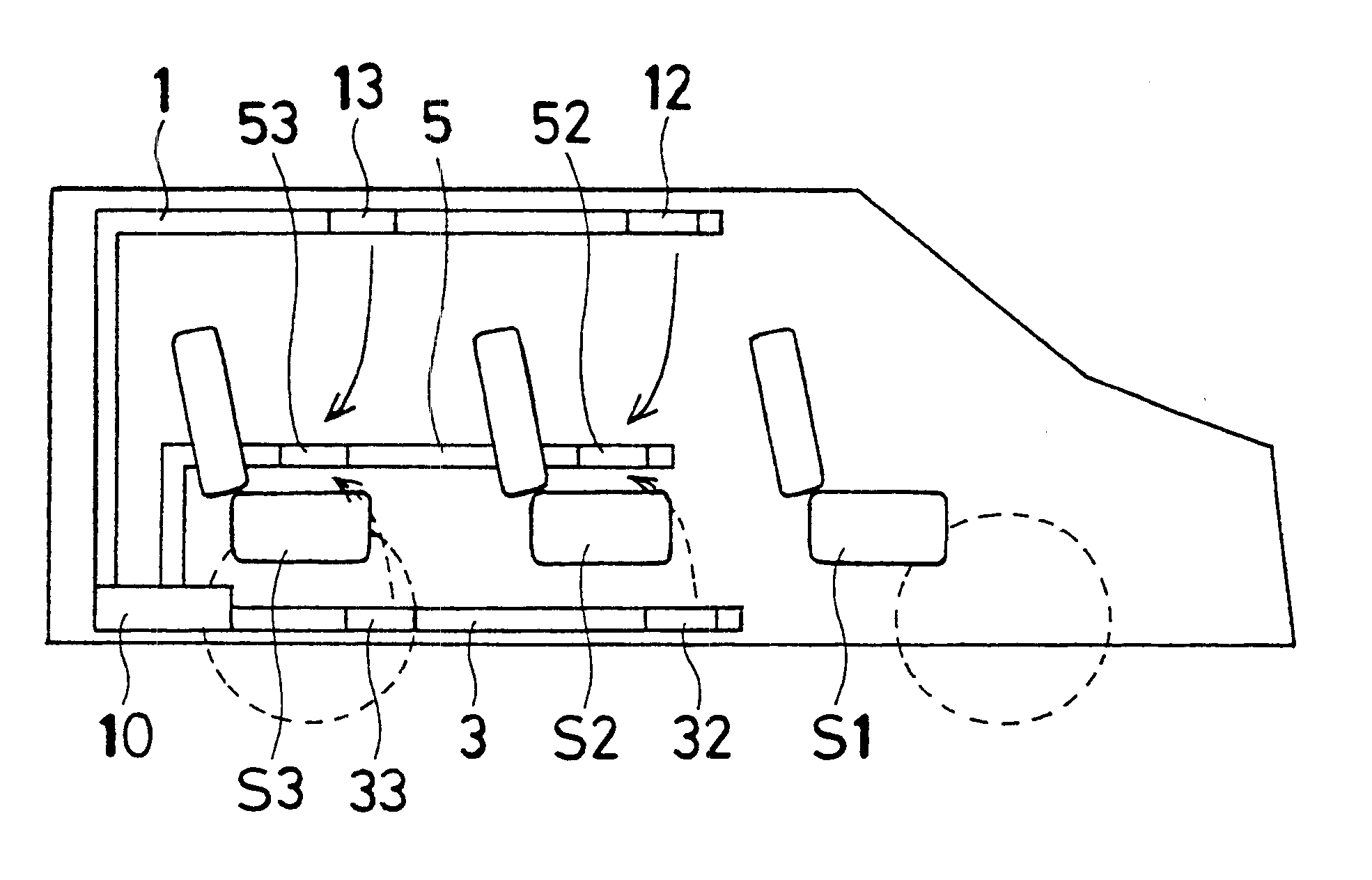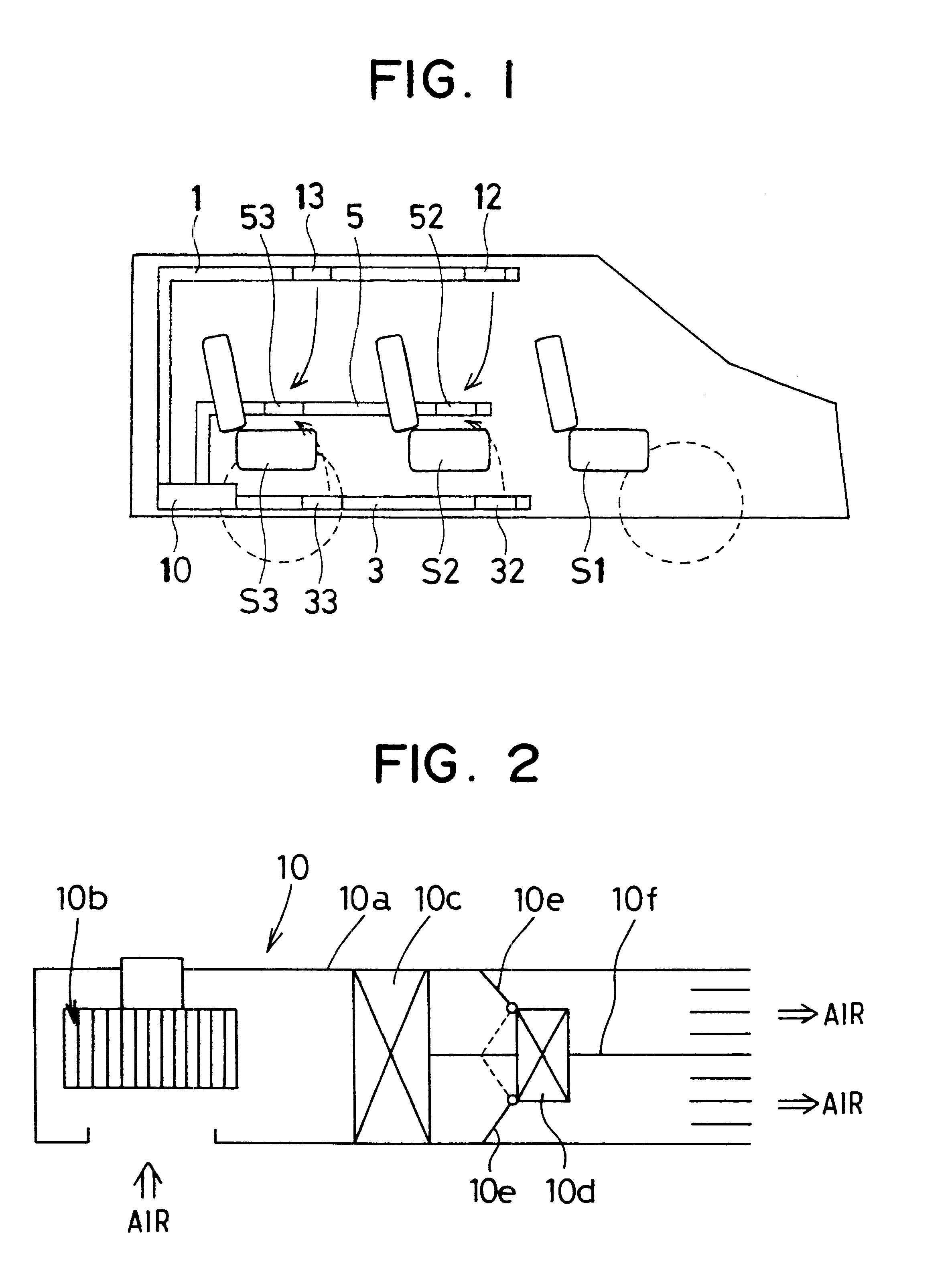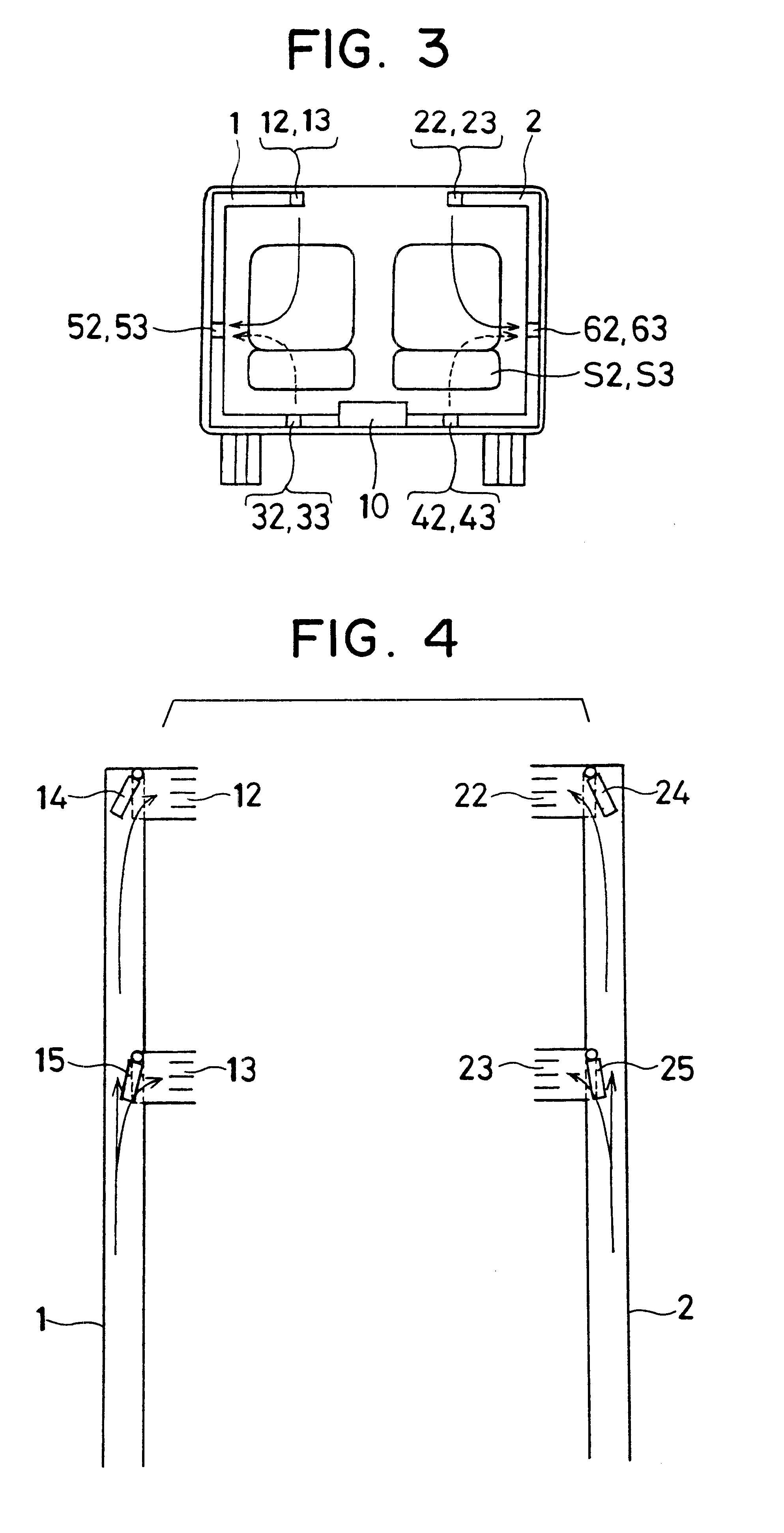Vehicle air conditioner having air suction port for each seat
a technology for air conditioners and seats, which is applied in vehicle arrangements, vehicle heating/cooling devices, transportation and packaging, etc., can solve the problems of deteriorating independent air-conditioning control, difficulty in performing independent air-conditioning control, and insufficient air distribution to the second seat sid
- Summary
- Abstract
- Description
- Claims
- Application Information
AI Technical Summary
Benefits of technology
Problems solved by technology
Method used
Image
Examples
first embodiment
A first preferred embodiment of the present invention will be now described with reference to FIGS. 1-6. In the first embodiment, a vehicle air conditioner includes a front air conditioning unit (not shown) for performing air-conditioning operation of a passenger on a first seat (i.e., front seat) S1 at the first line within a passenger compartment, a rear air conditioning unit 10 for performing air-conditioning operation for a passenger on a second seat (i.e., rear seat) at the second line within the passenger compartment and for a passenger at a third seat (i.e., rear seat) at the third line within the passenger compartment, and a control unit for controlling components of the front air conditioning unit and the rear air conditioning unit 10.
The front air conditioning unit includes a front air duct defining an air passage, a front blower generating an air flow in the air passage toward the passenger compartment, and a front control unit which independently controls air-conditionin...
second embodiment
A second preferred embodiment of the present invention will be now described with reference to FIG. 7. FIG. 7 shows a main part of the rear air conditioning unit 10 when being viewed from a vehicle rear side. In the second embodiment, as shown in FIG. 7, a single warm air duct 7 for introducing warm air toward of the left side of the passenger on the seat S2, S3 is disposed at an approximate center in the vehicle width direction to extent to the vehicle front side from the rear air conditioning unit 10, and an a warm air passage within the warm air duct 7 is separated into two parts for right and left seat sides in each rear seat S2, S3. As shown in FIG. 7, warm air outlets 72a, 72b, 73a, 73b are provided in the warm air duct 7 at positions corresponding to the foot spaces of each second and third seats S2, S3. Therefore, warm air from the warm air outlets 72a, 72b mainly flows toward the suction ports 52, 53, respectively, and warm air from the warm air outlets 73a, 73b mainly flow...
fourth embodiment
A fourth preferred embodiment of the present invention will be now described with reference to FIGS. 9-13. A vehicle air conditioner of the fourth embodiment includes a front air conditioning unit (not shown) for performing air-conditioning operation of a passenger on a first seat (i.e., front seat) at the first line within the passenger compartment, a rear air conditioning unit 10 for performing air-conditioning operation of a passenger on a second seat (i.e., rear seat) at the second line within the passenger compartment and a passenger on a third seat (i.e., rear seat) at the third line within the passenger compartment, and a control unit (ECU) for controlling components of the front air conditioning unit and the rear air conditioning unit 10.
The front air conditioning unit includes a front air duct defining an air passage, a front blower generating an air flow in the air passage toward the passenger compartment, and a front control unit which independently controls air-condition...
PUM
 Login to View More
Login to View More Abstract
Description
Claims
Application Information
 Login to View More
Login to View More - R&D
- Intellectual Property
- Life Sciences
- Materials
- Tech Scout
- Unparalleled Data Quality
- Higher Quality Content
- 60% Fewer Hallucinations
Browse by: Latest US Patents, China's latest patents, Technical Efficacy Thesaurus, Application Domain, Technology Topic, Popular Technical Reports.
© 2025 PatSnap. All rights reserved.Legal|Privacy policy|Modern Slavery Act Transparency Statement|Sitemap|About US| Contact US: help@patsnap.com



